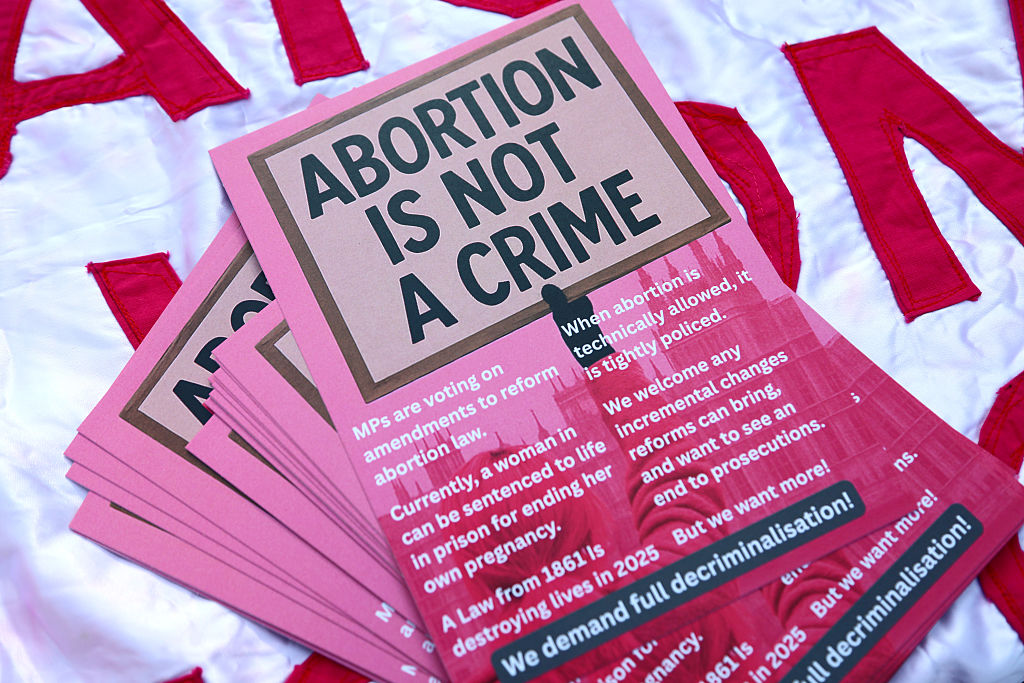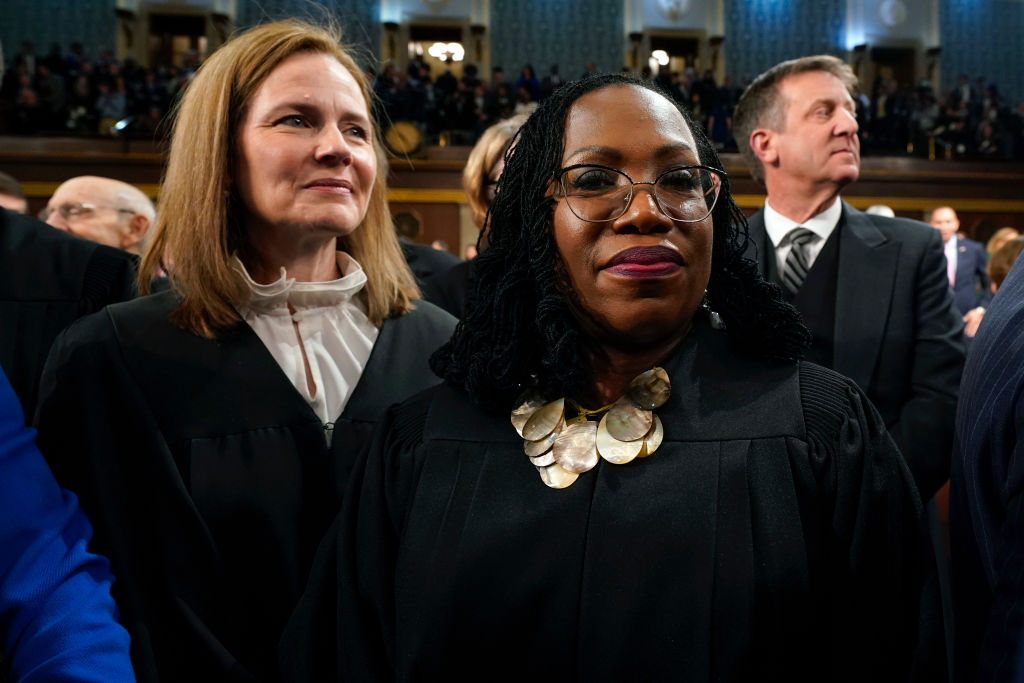It’s been just over a year since the Supreme Court decided in the Dobbs case to overturn Roe v. Wade — and pro-life activists were right when they predicted that the fight against abortion was just getting started.
Of course there was plenty for them to celebrate in the aftermath of Roe, which essentially kicked the issue of abortion back to individual states. Thirteen states had “trigger laws” in place that would almost immediately enact near-total bans on abortion, with some exceptions, in the event Roe were overturned. Other states reacted to the Supreme Court’s ruling by passing gestational bans on abortions ranging between six weeks after conception and fetal viability outside the womb.
The new bans are already saving unborn lives. In Texas, where state legislators actually passed a bill banning abortions after six weeks ahead of the overturning of Roe in 2021, there has been a spike in birth rates. According to a study from the Johns Hopkins Bloomberg School of Public Health, an additional 9,799 babies were born thanks to the law.
“Although our study doesn’t detail why these extra births occurred, our findings strongly suggest that a considerable number of pregnant individuals in Texas were unable to overcome barriers to abortion access,” Alison Gemmill, one of the researchers, said.
Texas demonstrates perhaps the best-case scenario for pro-lifers. In other parts of the country, a backlash to Dobbs has caused legislators to loosen restrictions on abortion. In multiple blue states, such as California and Maryland, new laws further enshrined a right to abortion and provided refuge for abortion-seekers coming from states with bans.
The latest battleground is in Ohio, where pro-abortion activists are trying to get an amendment that would create a state constitutional right to an abortion up for a vote in the upcoming November elections. The amendment was drafted by the ACLU and also proposed by Ohioans for Reproductive Freedom and Ohio Physicians for Reproductive Rights. Ohio is notably the state whose six-week heartbeat limit on abortions came up for debate after a ten-year-old who was raped by an illegal immigrant that was shacking up with her mother became pregnant. The child supposedly had to travel to Indiana to undergo an abortion, although no one in the mainstream media seemed to question why she would not have been covered by the Ohio ban’s exceptions for cases that threaten the life of the mother.
Opponents of the Ohio amendment say that it is written in an intentionally vague fashion so as to allow minors to get abortions without the consent of their parents — a great way to ensure child rapists are not held accountable for their actions, by the way. Critics also say the amendment could open up sex changes for minors without parental consent because the amendment broadly refers to reproductive and fertility-related treatments.
“[The amendment] would cancel out not only parental-consent laws but also mere parental notification for minors’ abortions or sex-change surgeries; strike down health protections for people of all ages who undergo these procedures, including requirements that a qualified physician perform them; and erase any meaningful limits on late-term abortions,” wrote Judicial Crisis Network lawyers Carrie Campbell Severino and Frank J. Scaturro.
Pro-abortion activists have argued back that the amendment would not supersede an Ohio law that prohibits minors from receiving abortions without the permission of their parents. Conservatives say the amendment’s language regarding not “directly or indirectly” burdening an individual seeking an abortion would necessarily prevent medical professionals from obtaining proper notification or permission from a parent of a pregnant minor.
The Alliance Defending Freedom also argues that the amendment “could force Ohio taxpayers to pay for abortions, contraception, fertility treatments, and even the surgical removal of healthy reproductive organs.”
Supporters of putting the amendment on the ballot had to collect 413,446 valid signatures by July 5 — yesterday. They turned in more than 700,00 signatures to the Ohio secretary of state, Frank LaRose, on Tuesday morning. The next step will be for county election officials to verify those signatures by July 20. The secretary of state would then approve the amendment to appear on the ballot by July 25.
The signature gatherers appear to have been involved in some deceptive practices. One paid signature gatherer was caught on camera knowingly getting people who are not registered to vote in Ohio to sign the petition. The man admitted that the signatures would likely be thrown out during the verification process, but that he needed to collect a certain amount of signatures that day in order to get paid. Another signature gatherer from Michigan who said he is paid “a little less” than $25 an hour admitted after some prodding that he does believe the amendment would allow minors to receive abortions without parental consent. This despite signature gatherers being instructed to tell signees that the amendment would “protect women’s reproductive rights”.
Amy Natoce, press secretary for Protect Women Ohio, a group opposing the amendment, said, “The ACLU’s extreme anti-parent amendment is so unpopular that it couldn’t even rely on grassroots support to collect signatures. The ACLU paid out-of-state signature collectors to lie to Ohioans about its dangerous amendment that will strip parents of their rights, permit minors to undergo sex change operations without their parents’ knowledge or consent, and allow painful abortion on demand through all nine months. The ACLU’s attempts to hijack Ohio’s constitution to further its own radical agenda would be pathetic if they weren’t so dangerous.”
Since a majority of Ohioans support the amendment, according to most polls, Republicans are currently working to raise the threshold for changes to the Ohio constitution. Constitutional amendments right now only require a simple majority to pass. A measure called Issue 1 in an August special election would require constitutional amendments to receive 60 percent of the vote. Ohio voters appear to be split on Issue 1. If it passes, it could effectively kill the abortion amendment.
State and local elections continuously prove to be the new ground zero for abortion-related fights. In Arizona, Governor Katie Hobbs issued an executive order that neutered the state’s fifteen-week ban by removing the authority of county attorneys to prosecute abortion cases. The order also directs all abortion cases to be handled by Attorney General Kris Mayes, who stated during her campaign last spring that she will not be enforcing the state’s abortion law.
“I am the only candidate for attorney general who is saying, even when Roe falls, and it’s probably going to fall this summer, we will not prosecute women or doctors in the state of Arizona for seeking abortion or providing abortion,” Mayes said.
Conservatives were recently able to mobilize state and local activists in response to concerns over public school curricula and Covid policies. The test now will be if they can do the same on abortion — and what those grassroots coalitions will look like — as blue and purple states move to codify Roe.

























